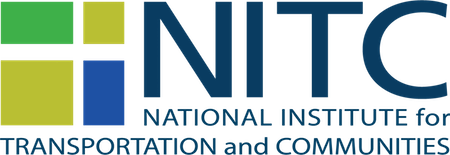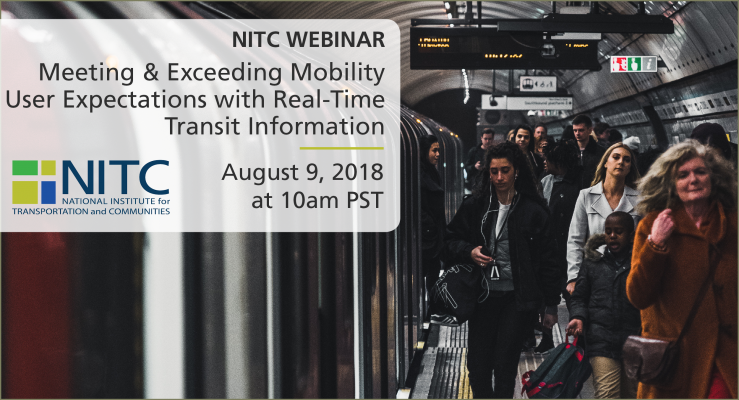WATCH THE RECORDED VIDEO
PRESENTATION SLIDES
Miss the presentation or want a look back? You can view the presentation slides here.
OVERVIEW
Every day transit riders ask the same question: when’s the next one coming? To answer this question, transit agencies are transitioning to providing real-time transit information through smartphones or displayed at transit stops.
The proliferation of transit planning and real time arrival tools that have hit the market over the past decade is staggering. Yet with transit ridership on the decline, agencies can’t afford to ignore the importance of providing accurate, real time information to their customers. Real-time transit information improves the reliability and efficiency of passenger travel, but barriers have prevented some transit agencies from adopting the GTFSrealtime v1.0 technology. A new NITC-funded study in May led by Sean Barbeau of the University of South Florida seeks to...
Read moreWatch video
View slides
Summary: The Federal Transit Administration invests in building the capacity and improving the quality of public transportation throughout the United States of America. Under FTA's leadership, public rail, bus, trolley, ferry, and other transit services have reached greater levels of safety, reliability, availability, and accessibility. Come hear the highlights of FTA's impacts and participate in an interactive question/answer session and discussion on career options in public transportation!
Bio: Amy Changchien is the Director of Planning & Program Development of the Federal Transit Administration Region 10 Office in Seattle. Ms. Changchien has been a transportation professional for over 20 years, with experience spanning from highway to transit. In her career, she has worked on projects involving highway operations, Intelligent Transportation System, commuter rail, light rail, streetcar, ferries, and buses. Ms. Changchien holds a bachelor's degree in Civil Engineering and a master's degree in Public Administration from University of Washington.
View slides
If you would like to receive continuing education credits such as PDH or CM, please make sure to complete this evaluation form once you've watched the entire video so that we have a record of your attendance.
Watch video:
Read moreThe video begins at 2:16.
Abstract: Reliance on the automobile for most trips contributes to costly trends like pollution, oil dependence, congestion, and obesity. Germany and the U.S. have among the highest motorization rates in the world. Yet Germans make a four times higher share of trips by foot, bike, and public transport and drive for a 25 percent lower share of trips.
This presentation first investigates international trends in daily travel behavior with a focus on Germany and the USA. Next, the presentation examines the transport and land-use policies in Germany over the last 40 years that have encouraged more walking, bicycling, and public transport use. Using a case study of policy changes in the German city of Freiburg, the presentation concludes with policies that are transferable to car-oriented countries around the world.
Bio: Ralph Buehler is Assistant Professor of Urban Affairs & Planning and a Faculty Fellow with the Metropolitan Institute at Virginia Tech in Alexandria, VA. Originally from Germany, most of his research has an international comparative perspective, contrasting transport and land-use policies, transport systems, and travel behavior in Western Europe and North America. His research falls into three areas: (1) the influence of transport policy, land use, socio- demographics on travel behavior; (2) bicycling, walking, and public health; and (3) public transport...
Read moreThe video begins at 4:15.
Abstract: The California High-Speed Rail Ridership and Revenue Forecasting Model is a state-of-the-practice transportation model designed to portray what future conditions might look like in California with and without a high-speed train. The model was developed by Cambridge Systematics, Inc., and took roughly two years to complete. The resulting ridership and revenue forecasts provided, and continue to provide, sound information for planning decisions for high-speed rail in California. This presentation briefly describes the underlying model that was developed to generate the ridership and revenue forecasts along with summaries of ridership forecasts from published reports.
The video begins at 0:47.
Topic: Schedule-based Public Transportation Planning Model and Integration with Other Transportation Planning Models
Speaker Hyunsoo Noh, a PhD Candidate from the University of Arizona, will discuss the integration of schedule-based public transportation and other transporation planning models.

